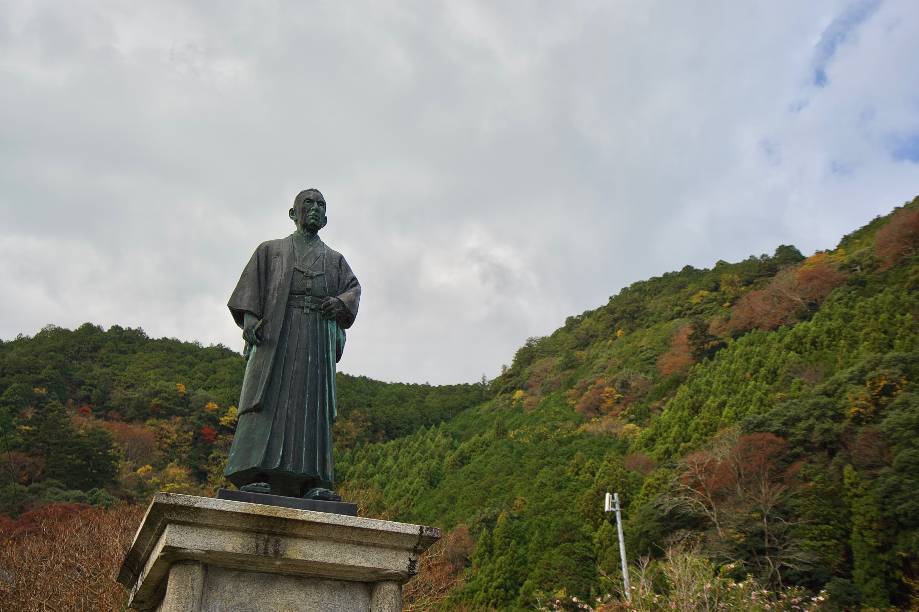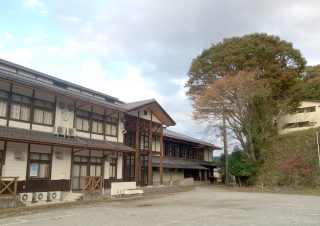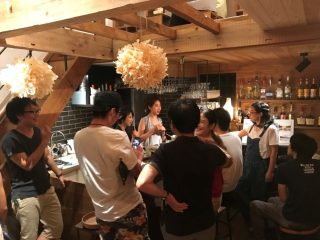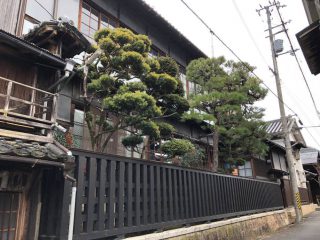National Road 169 runs from Nara City to Shingu City in Wakayama Prefecture, passing through the steep mountainous area of the Kii Peninsula. This route is popular with tourists from Kyoto, Osaka, and Kobe because it has convenient access to sightseeing spots such as Mt. Yoshino and Mt. Odaigahara. Following National Road 169 about 20 minutes from the town of Yoshino, there is a long tunnel through that mountains that empties into Kawakami Village, which shares a border with Yoshino. Kawakami Village is the center of Yoshino forestry, and it is no exaggeration to say that Japanese forestry originated from there as well.
Shou-zaburo Dokura was born in 1840, which was the late Edo period, and lived in the Meiji and Taisho eras as well(1868 – 1926). Born in the Otaki area of Kawakami Village to a household of people highly experienced in working and living in the mountains, he was trained in forestry from a young age.
Shou-zaburo Dokura’s work had great significance in developing Yoshino Forestry into a form that would eventually be adopted nationwide. Although you may not be able to imagine it from the current situation of forestry in Japan’s depopulated mountain villages, it was forestry that drove the development of the Japanese economy since the Meiji era(1868– 1912). The role that forestry played in civil engineering, supplying construction material, shipbuilding, water supply management, and forest preservation was very important to the national economy.
It is said that forestry in the Yoshino area actually began in the Muromachi era(1336 – 1573), but the current afforestation method called “ultra-dense planting and multi-thinning,” or what is basically commonly known as “Yoshino Forestry,” was created by Shou-zaburo Dokura and promoted by him during the Meiji era. Since times long past, Yoshino’s cedar and cypress trees were known for their high-quality, but the trees raised by Shou-zaburo Dokura were exceptional even here.
Yoshino forest land owned by Dokura was 9,000 hectares or about the equivalent of approximately 1,925 Tokyo Domes in area at its peak.
High-quality lumber harvested from the mountain was transported down the Yoshino River to Wakayama, Osaka and then distributed nationwide.
So far, we have only covered Shou-zaburo Dokura as a king of the forestry, but throughout his lifetime spent in Kawakami Village he accomplished even greater feats. After being appointed by the Government of Japan to the post of Minister in charge of land and sea use in 1880, he would oversee the development of transportation infrastructure and work on projects such as dredging and expanding the width of the Yoshino River, and improving roads such as National Road 169, the East Kumano Road, and the road which runs from Yoshino to Gojo. Good transportation infrastructure was the key to successful forestry development. Thanks to his efforts to improve transportation infrastructure, the forestry industry greatly contributed to the economic development of the Yoshino region and still does to this day.
Yoshino is also famous for its cherry blossoms, but it is said that “the best cherry blossoms in Japan may have already disappeared.”
In the late Edo period, the society was unstable due to the societal conflicts which would eventually lead to the Meiji Restoration, and the number of visitors to Mt.Yoshino decreased leading to less numbers of people looking after the cherry blossoms in Yoshino. Right after the Meiji era started, the government issued a Shinto-Buddhism separation order, and a wave of abolition of Buddhas reached Yoshino. Mt. Yoshino is a sacred place for a religion called “Shugendo.” Shugendo is an ancient Japanese mountain religion which includes practices that would be considered to be both Shinto and Buddhist in today’s terminology. Due to the separation order, many Shugendo places of worship were lost throughout the country. Furthermore, since the sacred tree of Zao-gongen, who is the principal deity of Shugendo, was (and continues to be) the cherry tree, the protection of these trees went against official government policy.
At that time, a merchant from Osaka came to Yoshino with an offer to buy all the cherry trees from Mt. Yoshino. The suffering people of Mt. Yoshino, in their desperation, agreed to the merchant’s terms. It is said that the reason that the merchant tried to buy the cherry trees was to use them for firewood or woodblocks.
Mt. Yoshino’s leader at this time visited with Dokura to discuss purchasing cedar and cypress seedlings to plant on the sites where the cherry trees would be cut, thinking they could make some money in this way. Dokura was shocked by their proposal, and instead of agreeing, he gave them money so that they could negotiate a refund with the merchant, declaring, “A new government will be established someday, and eventually Japan will interact with the countries of the world and foreigners will visit Yoshino. In anticipation of that time, we must save the cherry blossoms of Mt. Yoshino.” Mt. Yoshino’s leader accepted the offer from Dokura, and stopped selling the cherry blossoms. Thanks to Shou-zaburo Dokura, the cherry trees of Mt. Yoshino had been saved from being cut down. He truly had a special interest in the cherry blossoms of Mt. Yoshino and outstanding foresight.
Beyond this, the achievements of Shou-zaburo Dokura are still many. He had the conviction to divide the property of the Dokura family into three equal parts, investing in the country, education, and business, respectively. He established elementary schools at his own expense and provided children with school uniforms and stationery. In addition, he had friendship with Jo Niijima and greatly contributed to the establishment of Doshisha University and Japan Women’s University. Moreover, he supported the Liberal Rights Movement so politicians such as Ta-isuke Itagaki, Hirobumi Ito, and Shigenobu Okuma, visited Kawakami Village to meet with Dokura.
Shou-zaburo Dokura passed away at the age of 77 in 1917, and even outside of the forestry industry, the legacy of his work that supported Japan’s growth in fields such as politics and education, is still being handed down. There is a huge monument engraved in the wall of the armored rock on the opposite shore of Otaki, Kawakami Village in honor of that achievement. What future for Japan did Dokura envision? The bronze statue of him located at the site of his birthplace seems to continue to look far beyond Japan.




